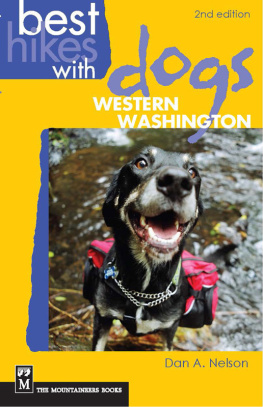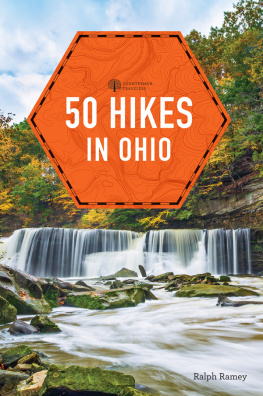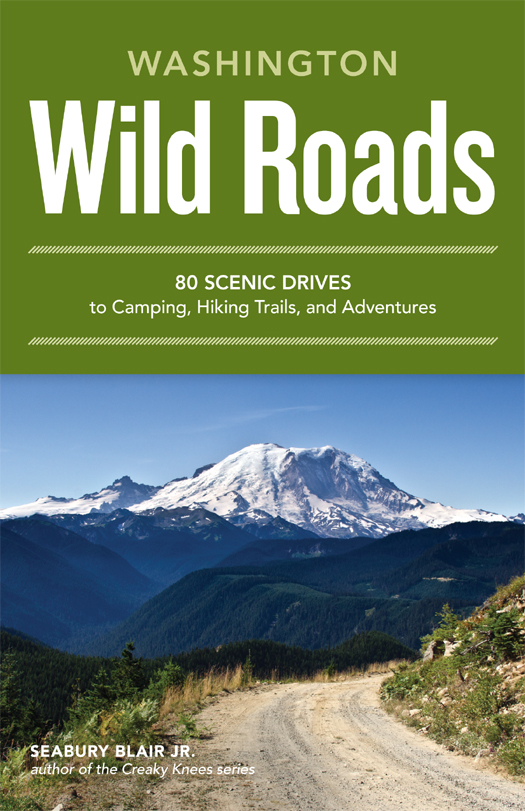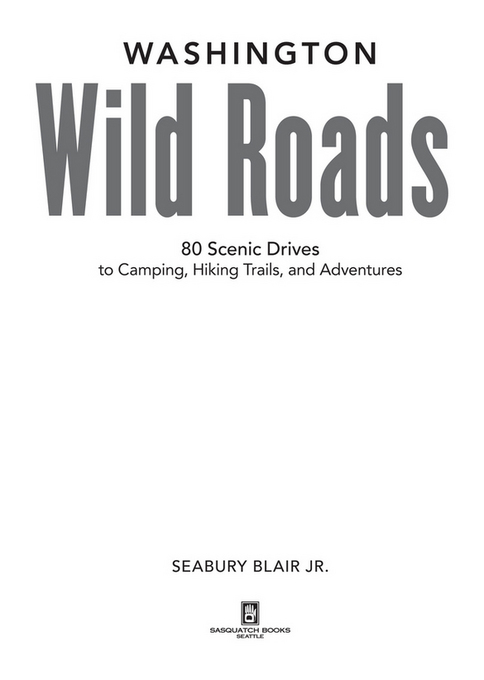Copyright 2012 by Seabury Blair Jr.
All rights reserved. No portion of this book may be reproduced or utilized in any form, or by any electronic, mechanical, or other means, without the prior written permission of the publisher.
Published by Sasquatch Books
Front cover photograph: 2011 by JD Hascup
Cover design: Sasquatch Books
Interior design and composition: Sarah Plein
Service/Melissa Days ()
Maps: Marlene Blair
Library of Congress Cataloging-in-Publication Data is available.
eISBN: 978-1-57061-827-7
Sasquatch Books
1904 Third Avenue, Suite 710
Seattle, WA 98101
(206) 467-4300
www.sasquatchbooks.com

v3.1
This book is dedicated to my trusty 1979 Subaru, the first vehicle that carried me thousands of bumpy miles on wild roads
CONTENTS
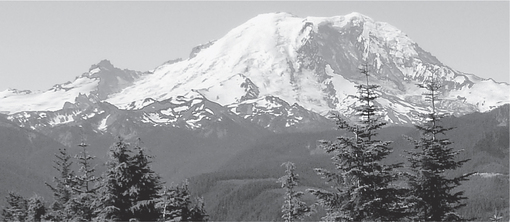
DRIVES AT A GLANCE
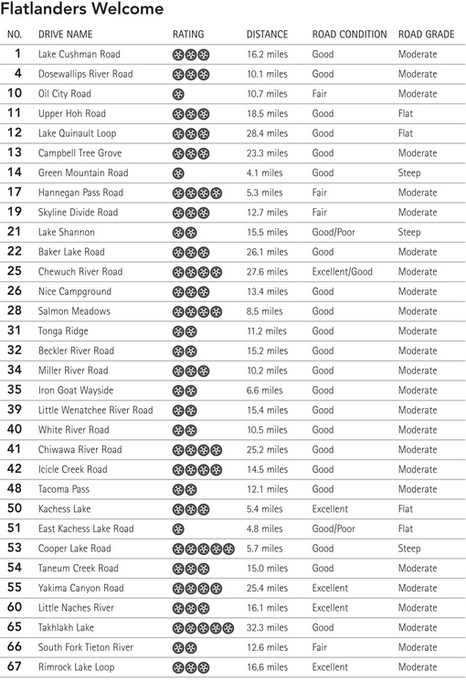
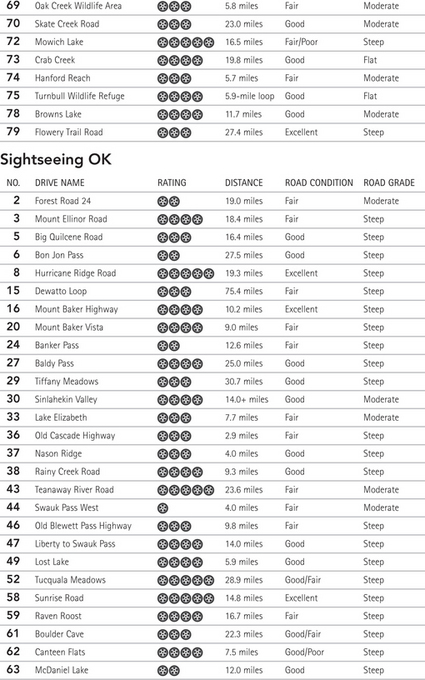
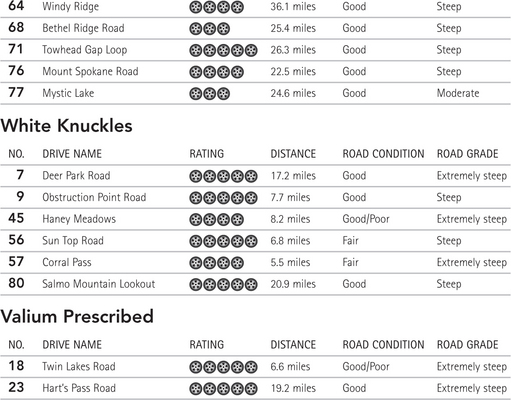
INTRODUCTION
A funny thing happened on my weekly dash to the trailhead in the Belching Beast, my trusty Ford pickup: I began to slow down and enjoy the scenery. For many years, the Beast and I raced to the trailhead, eating forest road dust from hikers who got an earlier start than me. I learned early on in my adventures that no matter how soon I hit the road, somebody always hits it sooner.
It was this lesson, combined with the fact that my creaky knees now rival those of the Tin Man in The Wizard of Oz, that first caused me to ease the pressure on the Beasts accelerator pedal and start looking around. With good health and fortune, Ill never stop walking the wilderness pathways. But more importantly, getting close to Mother Natureeven if it is only behind a steering wheelis to my way of thinking the ultimate goal.
The Sunday Drive is disappearing, largely because the destination is more important than the adventure of getting there. As that splendid movie Cars pointed out, most people no longer drive for simple pleasure. The sad truth is, very few roads in Washington or any other state are built for driving pleasure. They are constructed primarily to get us safely and quickly from Point A to Point B. We speed from home to the office, the garage to the grocery, or the carpool lot to the trailhead. All of our attention is focused on getting the kids to the soccer pitch, and may the dolt in the big SUV who just cut you off rot in hell.
Yes, there are such things as backroads and country lanes that make operating a motor vehicle a more pleasant experience. These roads and secondary highways serve up some scenery and provide a chance to enjoy the trip. Youll find a number of guides that point them out to you. But they arent the kind of thoroughfare where, should you see a deer grazing near the shoulder, you might stop in the middle of the road to watch without fear of getting rear-ended. Worse, should the deer cross the road, it is likely many motorists will be going too fast to stop.
So Im happy to report that some roadsI call them wildinsist, by the quality of their surface or the scenery they traverse, that you slow down. They lead you to the edge of wilderness, through forests so tall the sky is a narrow slot overhead, up mountainsides to flower-filled meadows and August snowfields, across sagebrush prairies and stark basalt coulees. They are the last examples of the byways that existed everywhere seven or eight decades ago, roads built simply to be enjoyed.
Ironically, youll find most wild roads in Washingtons seven national forests, and most were not originally built for recreation. They were usedand continue to be used todayby people who make a living in our forests. So it is essential to remember that while were on our way to the picnic or campground, well be sharing the road with others whose livelihood depends on it. In most, if not all cases, signs announce active logging or even road closures.
Thats fine by me. As youll see by looking at any state road atlas, there are literally hundreds of wild roads in Washington. What follows here are 80 of the very best, and I hope youll find them as enjoyable as I do. Get an early start, or youll be eating my dust.
USING THIS GUIDE
The tabular matter at the beginning of each drive is intended to give you specific and quick information that can help you decide whether you might like to ride this road. The information includes:
Road Number and Name
Most of the roads in this guide begin at junctions with main highways or byways in various regions of the state. For the most part, the byways are listed along each highway corridor from west to east. Youll find recommended roads on the Olympic and Kitsap Peninsulas, the Mount Baker Highway (State Route 542), the North Cascades Highway (State Route 20), Stevens Pass Highway (US Route 2), Swauk Pass Highway (State Routes 970 and 97), Snoqualmie Pass (Interstate 90), the Chinook Pass Highway (State Route 410), White Pass Highway (US Highway 12), and the Road to Paradise (State Route 706) on the south side of Mount Rainier. Ive recommended only eight of hundreds of beautiful roads in Eastern Washington, simply because motorists from the western part of the state arent likely to drive so far for a Sunday outing. And some Sunday drivers on the eastern side of the state would just as soon keep their favorite roads to themselves.
Overall Rating
This is purely a subjective attempt to rank the roads from the very best (5 wheels) to those that arent quite so good (1 wheel), but are far better than the byways you wont find outlined in this guide. I tend to rank the roads with splendid vistas above those that snake through deep forest or along river bottoms, so if you prefer that kind of road, feel free to assume Im a dunderheaded fool and ignore my rating altogether.
Distance
The driving distance is listed one-way to a recommended turnaround point. The turnaround point may be at the end of the road, or the end of pavement, or at a point where I encountered washboarding or potholes that would shake the bolts off a Land Rover or swallow a Hummer.
Road Surface
Ive listed roads that are paved, graded gravel, graded dirt, or not maintained. Many of the roads in this guide start as paved byways and turn to gravel or dirt at some point along the way. In such cases, youll see Paved/Graded dirt, or Paved/Graded gravel.
The only road that is not officially maintained in this guide is the Twin Lakes Road, off the Mount Baker Highway 542. Signs are posted where the maintenance ends at the Tomyhoi Lakes trailhead.


